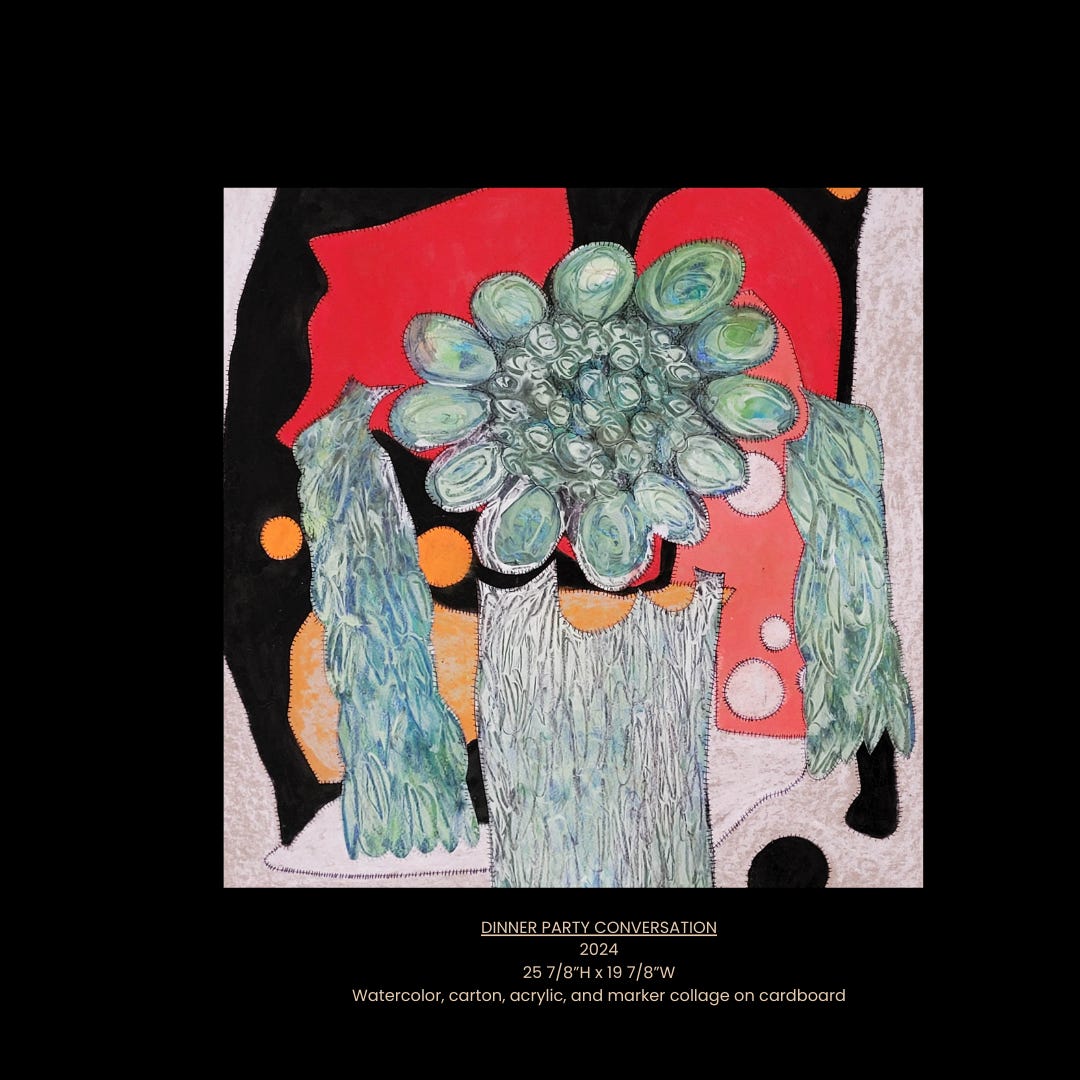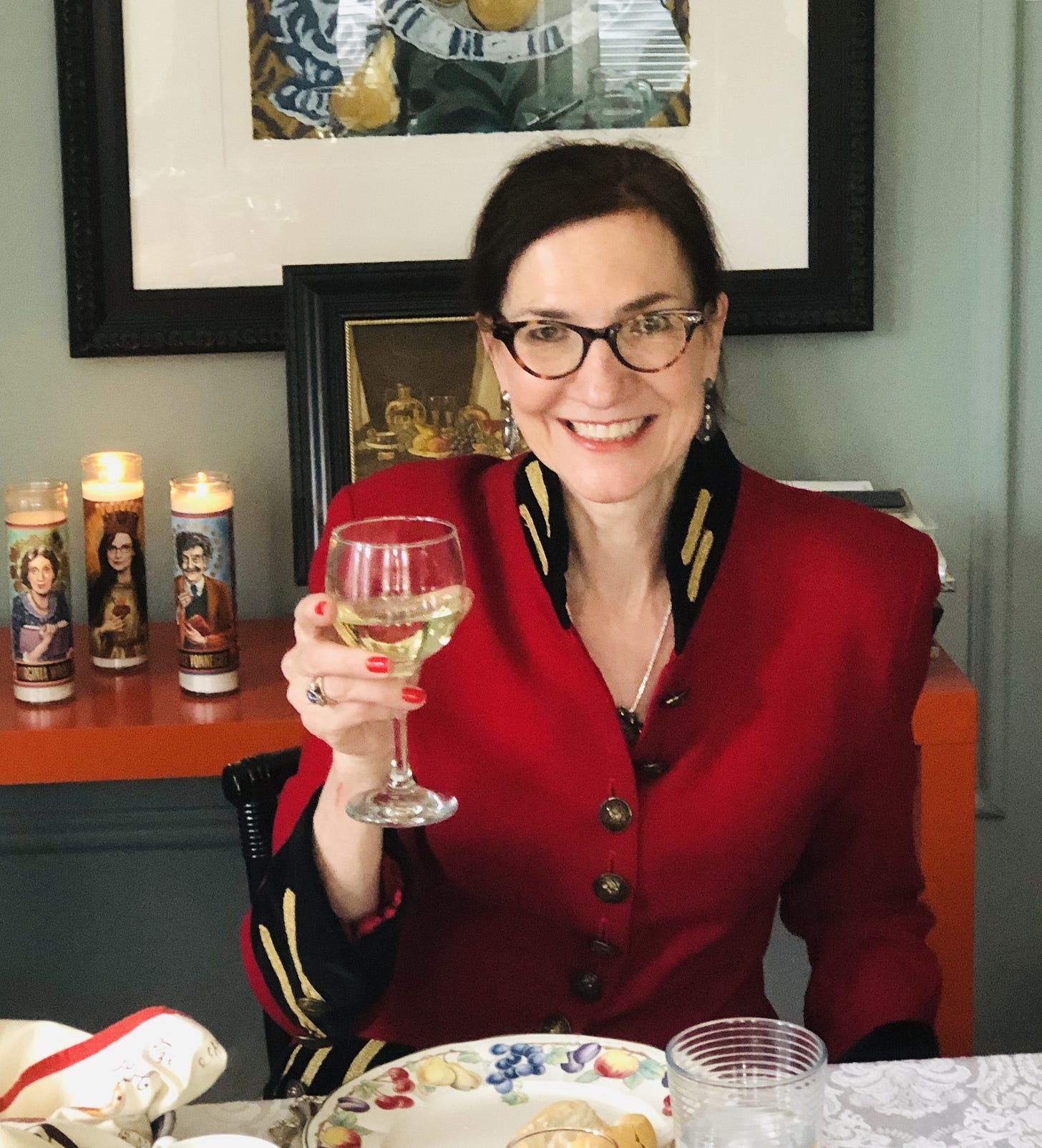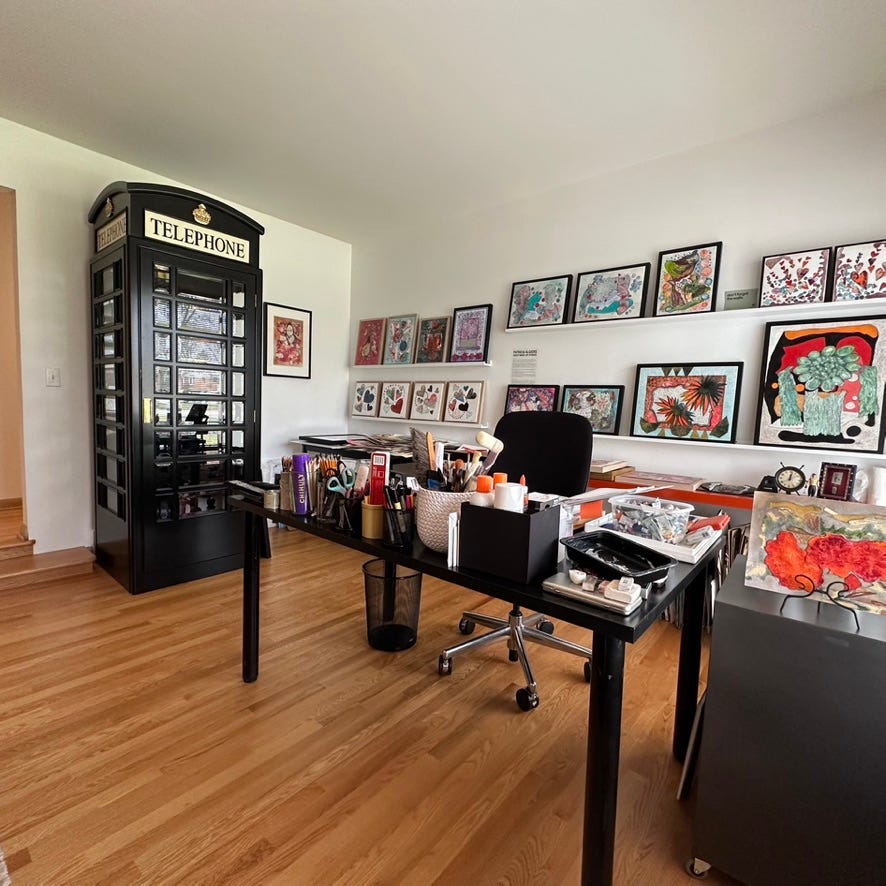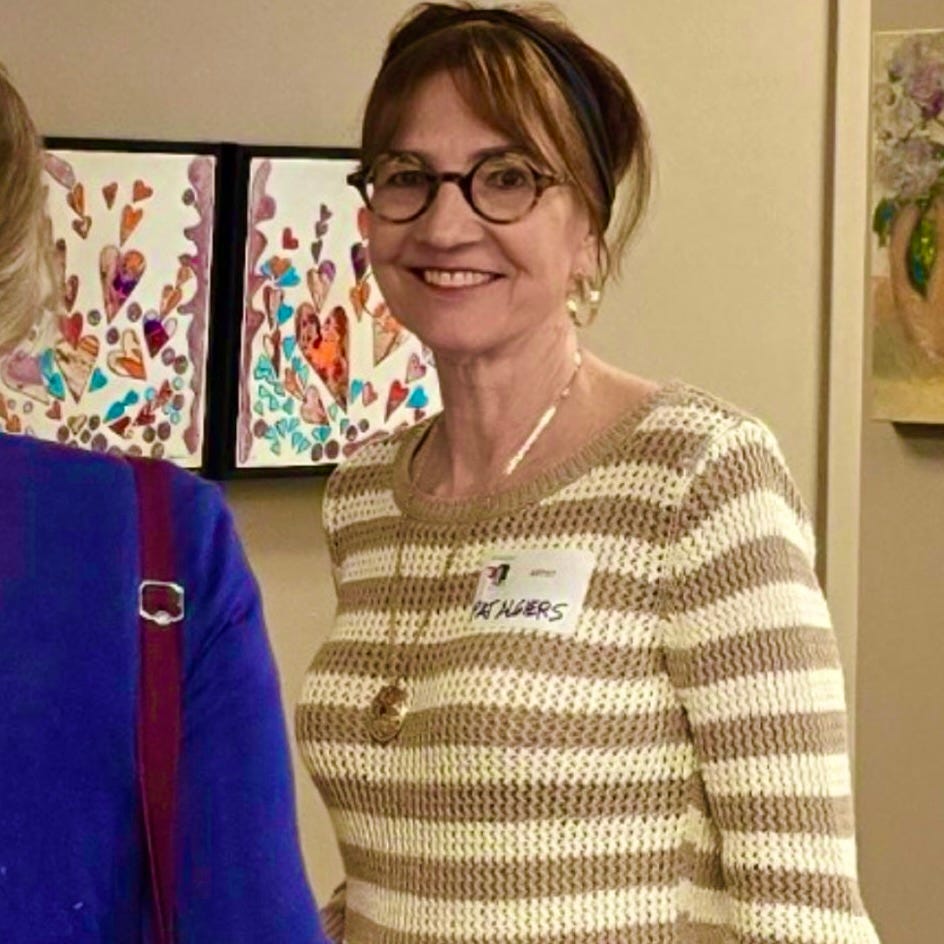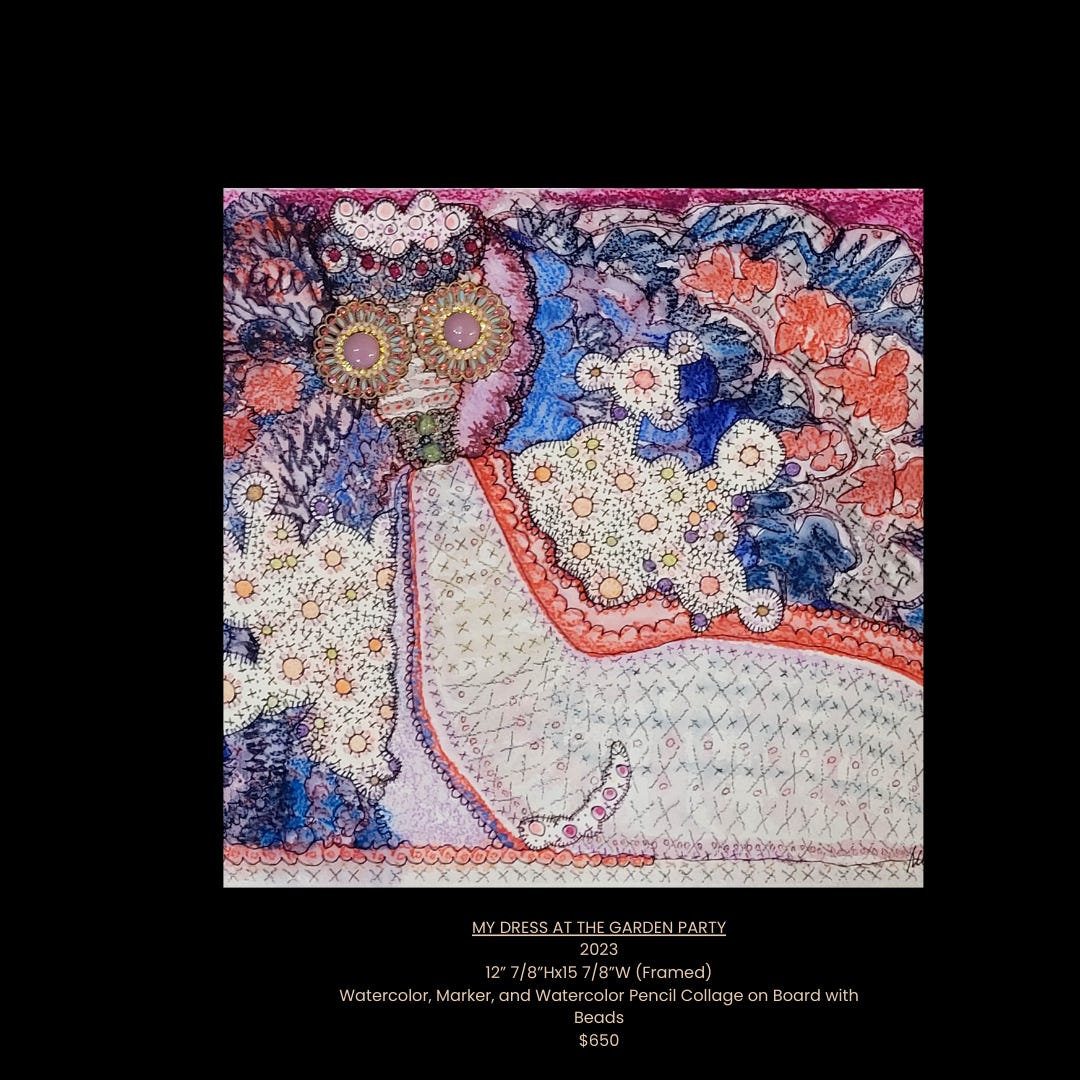Welcome to another issue of Who I’d Rather Be Talking About, where I interview interesting people from all over the world.
I’ve got a special guest for you today.
She’s a designer. A thinker. An artist. And a creative whose motto is “life is about people, places, and things.”
She also happens to be my sister.
For the record, I’d interview her even if we weren’t related.
I’m so proud to introduce my sister, Patricia Algiers - an artist, interior designer, and the owner/founder of the design firm Chemistry in Place. (As well as an amateur detective, spiritual guru, and life philosopher.)
A: Let’s talk about your early life and how it led to your career in art and design.
P: When I was 10, my mother found an art class for me on a bucolic farm in the Holy Hill area – it was an eye opener to art and its connection to nature. Other early experiences our small town’s summer rec center program that introduced me to luster lace (who knew?). A bright spot in Catholic grade school education was art class – followed by inspirational high school art teachers. Those experiences steered me to leverage creativity in various jobs throughout my career.
A: What career experiences shaped the trajectory of your career?
P: My interior designer career experience exposed me to businesses and industries I had no idea existed or never really thought about in terms of how they worked or their importance to our overall economy – I am fortunate to have worked on projects for banks, telephone companies, department stores, brokerage firms, candy stores, insurance companies, law firms, technology companies, schools, medical clinics, multi-family housing, corporate headquarters, museums, and schools.
A: In 2004 you started your own business. What prompted that decision and how has your business evolved over the years?
P: I thought through what “likestyle” and “lifestyle” could mean if applied to where I live and how I live. I then took a chance and started my own business, later naming it “Chemistry in Place” … because good design is chemistry in place. I am a firm believer that people have many talents – and strive to create an environment that allows the team to leverage their talents, adding value to clients.
A: What is your design philosophy and how does it transfer to your professional and personal life?
P: Design is the personification of spirit and culture. It is a living, breathing thing. What a place or thing looks like is important, but what a place or thing feels like, is equally if not more important.
A: Your talent to make a room look fabulous is amazing - can you share a trick or two that anyone can do to instantly transform their room? (Without even spending money?)
P: Hmm… thinking residential design tips:
Go through your possessions and pull together things that could be used as
accessories and/or wall hangings – look to find things that look good together.
Figure out how you live and then look at your space to see how changing it up can make it mirror your lifestyle. Then think out of the box (or out of the room) and shake things up.
Make sure the color of your light is the same in all lighting throughout your house – I use 3000K for all my lighting.
Change out all switch plates and device covers to white.
Make sure all hardware is the same color throughout.
Lighten up your windows and keep window treatment consistent throughout.
Plantation shutters, blinds or Mecho shades are the way to go for all styles.
Make sure your space looks like you and those who you live with, let your personal brand shine through.
A: Now, let’s talk about your art. You’re on fire! How has your art evolved over the years from your style in college to what you’re doing now?
P: The experiences in my life have influenced me, mostly subconsciously. When I was in grade school, I liked to make crazy mixed-up stories with words. Now I make those crazy mixed-up stories using mixed media.
A: Tell us about the different pieces you’ve created - what’s your process when it comes to a new piece? Do you do one at a time, or have several going on at once?
P: I do several pieces at a time, working to create series for shows. That being said, they all take shape at the same pace and I really don’t know what the end game will be for any of them. The hardest part of creating these pieces is knowing when to say they are done.
A: You do a variety of pieces…. watercolor, mixed media, and collage. Can you speak to these a bit?
P: I start out doing watercolor and mixed media techniques not knowing exactly what technique I will use when. Working on art is my form of meditation and I sort of go in a zone and just keep working until images surface in a way that I think people will be able to see something in them. My piece “Can’t Get Quebec Out of My Mind” is a good example of what the process produces.
A: You come up with the best titles for your pieces… do these come to you before you begin work, during the process, after… or?
P: After, and pretty much instantly when a piece is done.
A: You’ve been on quite a circuit, featuring your work in art shows throughout the Midwest. How does one apply to, prepare for, and participate in shows?
P: Different art organizations issue “calls.” Calls are to artists what RFPs are to consultants. The calls are for shows, whether exhibitions or festivals. I look for the calls that are exhibitions. I’ve been fortunate to have shown at the RAM Wustum, Anderson Art Center, Thema Sadoff, Cedarburg Art Center, and Plymouth Art Center and online with the James May Gallery.
A: What do you hope people take away from your art?
P: I hope they see something in my art that speaks to them. Something that makes them smile.
A: Can you speak to the business side of art? How do you promote your work, show it, and sell it?
P: I am figuring that out – and think most artists are too. It keeps evolving. I now spend most of my efforts finding and applying for exhibitions. I have a website and I’m on Instagram. Word of mouth helps, and some sales have been simply chance.
A: You not only create art, you also assemble and curate collections for your clients. Sounds like the perfect intersection of your design and art career - what types of projects have you worked on, and what types of projects would you like to do in the future?
P: I recently completed two installations that were both very exciting to do: At Park Central Apartments in Appleton, 19 mixed media paintings were printed on canvas in a limited edition series created to enhance the amenity areas of the 39-unit apartment complex; at Shannon St. Rita’s, a painting was digitized into 12 different panels that respectively depict colors in the color wheel, creating “The Science of Color Gallery” – an adjacent installation called “The Emotions of Color Gallery” uses color and relates it to the emotions it elicits.
A: What’s next for your art?
P: Bigger pieces – very large-scale w/ intense color. I am also working on pieces that can be translated into wall covering, which would essentially make a wall a contemporary painting.
Quick Round:
Favorite artist: Paul Klee and Henry Matisse – it’s a toss up
Style icon: Audrey Hepburn or Diane Keaton…hard to pick one over the other
Museum you’d like to visit: Victoria and Albert Museum (largest decorative arts collection in the world)
Future travel destination: London
What’s always in your bag? A tape measure and a rosary that was my parents
Quick design tip that costs nothing? Curate what you have: less is more
And, that’s a wrap!
If you’d like to learn more about Pat’s art or work, visit:





